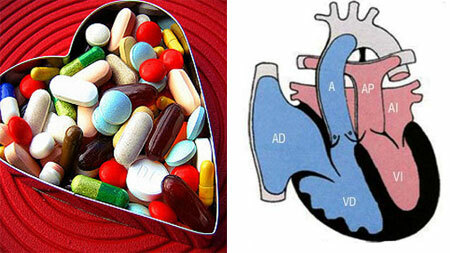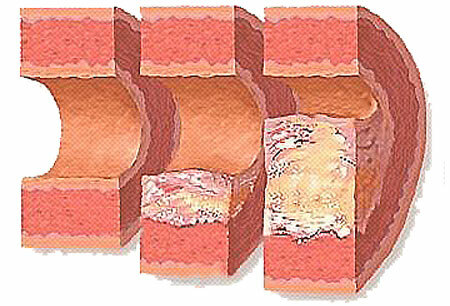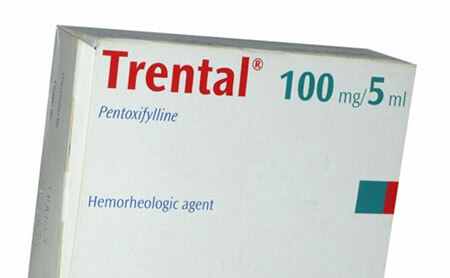8 groups of typical symptoms of manifestations of AVI in adults

Headaches, fatigue
Clinical symptoms of vegetative-vascular dystonia are manifold - this is what determines the difficulties in diagnosis. However, it is worthwhile for a person to know the most typical manifestations of this disease, which can be divided into 8 groups:
1. Cardiovascular
- cardiac arrhythmias;
- pressure jumps;
- "marble" or pale skin, tendency to freeze limbs;
- heart pain or discomfort in this area.
2. Hyperventilation
- increase in respiratory rate;
- feeling of squeezing the chest;
- shortness of breath;
- discomfort when inhaled and exhaled;
- dizziness.
3. Irritated bowel
- abdominal pain - aching or spastic;
- alternation of constipation and diarrhea;
- nausea and vomiting;
- lump in the throat when swallowing.
4. Disrupted sweating in the form of its increase, especially on the palms and soles.
5. Cystalgia - increased frequency of urination and soreness, in which no inflammatory signs are detected in the analysis of urine.
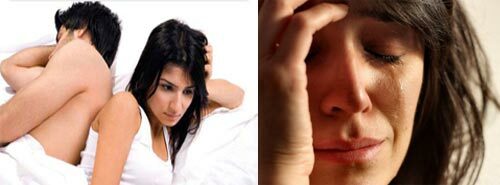
sexual dysfunction, mood change
6. Symptom of sexual dysfunction
- decreased sexual desire;
- lack of orgasm;
- impaired erection in men.
7. Disrupted thermoregulation
- has a tendency to reduce the temperature to 35 ° C or a slight increase to 37.5 ° C( with no inflammatory process in the body);
- chills.
8. Psychoneurological
- general weakness;
- rapid fatigue;
- decrease in physical strength;
- increased irritability;
- frequent mood swings to tearfulness;
- headaches;
- sleep disorders.
Contents of
- 1 Which doctor treats the VSD?
- 2 complications of vascular dystonia
- 3 Treatment of vascular dystonia in adults
- 3.1 Preparations for the treatment of vascular dystonia
- 3.2 Phytotherapy - traditional methods
- 3.3 physiotherapy and other options preformed therapy
- 3.4 adaptogen
- 3.5 Treatment meteozavisimosti
Which doctor heals VSD?

Numerous clinical symptoms of vegetative-vascular dystonia in women and men introduce a person in error as to which doctor treats the disease. Usually it is worth contacting such specialists as:
- therapist;
- neurologist;
- cardiologist;
- gynecologist( for women, if hormonal therapy is required for replacement therapy).
Complications of vegetative-vascular dystonia
The absence of timely treatment of vegetative-vascular dystonia can provoke certain complications, which can even be life-threatening.
The negative consequences of VSD are:
- Sympatadrenal crisis, manifested by a pronounced sense of fear, arrhythmias, increased sweating, hypertension, etc.
- Vagoinsular crisis, which is characterized by hypoglycemia( decreased blood sugar), slow heart rate, decreased blood pressure, pronounced weakness.
- Mixed variant of the crisis.
Treatment of vegetative-vascular dystonia in adults

Treatment of vegetative-vascular dystonia is carried out by individual methods, which have to be selected for each patient individually. This is explained by the large number of causes and symptoms that cause the development of this disease. Modern medicine has a large arsenal of IVD therapy.
Etiological treatment - elimination of the cause of
First and foremost, it is important to improve the psycho-emotional background of a person, by reducing the number of stresses and conflicts, normalizing relations in the family, at work.
For effective treatment of infectious-toxic forms of AVI in adults, oral cavity check and sanation of all inflammatory diseases( caries, tonsillitis, gingivitis, etc.) will be required.
If the appearance of dystonia is associated with a special kind of work, then it is necessary to review and take into account all occupational hazards and, if possible, eliminate them. If this is not feasible, then the patient should seriously think about changing the type of work.
Psychotherapy and auto-training
Psychotherapy and auto-training - an important and effective method of therapy VSD.In some cases, its effect is much better than the treatment with pharmacological drugs. For the most effective for conversations with a therapist can be invited and relatives.
This will provide an opportunity for a more complete understanding of the disease and stimulates participants to change the psychological climate in the family.
Unpleasant symptoms of vegetative-vascular dystonia will help to overcome self-hypnosis, the basics of which will be taught by a doctor. In combination with auto-training and exercises for muscle relaxation, this method works on various mechanisms of the disease and effectively suppresses them, normalizing the human condition.
Drugs for the treatment of vegetative-vascular dystonia
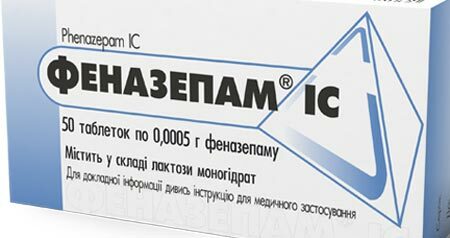
Drugs for the treatment of vegetative-vascular dystonia are aimed at eliminating disturbances in the functioning of connections between brain structures and internal organs. They are represented by the following groups:
1. Sedative - water infusions of valerian root and / or motherwort herb. These herbal remedies are soothing, improve the performance of the hypothalamus and brain stem. The course of treatment in adults is 3-4 weeks.
2. Tranquilizers. Their main property is anxiolytic, i.e.reduction of anxiety, emotional stress and fear. Representatives of this group are Diazepam( Relanium), Elenium, Phenazepam, Medazepam, Oxazepam.
One can especially note daytime tranquilizers, such as Tofizopam( Grandaxin) and Afabazol, which do not cause drowsiness. A similar action has the homeopathic preparation Tenoten.
Tranquilizers are prescribed by the course in 2-3 weeks, additional reception is recommended in case of a stressful situation.
3. Combined preparations of normalize the functions of the vegetative nervous system, reduce the excitability of brain structures( adreno- and cholinergic), soothingly act on the hypothalamus.
Their representatives are Belloid( composition: butobarbital, alkaloid belladonna, ergotoxin) and Bellaspon( composition: phenobarbital, alkaloid belladonna, ergotamine).
4. Antidepressants. Depression with vegetative-vascular dystonia is secondary, i.e.appears after the appearance of the main symptoms of the disease.
This distinguishes it from the primary "masked" depression, which can hide under various symptoms, causing so-called "psychosomatic pathologies."Drugs used for treatment should correspond to the type of depressive disorder:
- Agitated( anxious) depression - amitriptyline( Triptysol);
- Asthenic depression is imipramine( Imizin, Melipramine);
- Hypochondria - Teralen, Sonapax;
- A no-brainer depression - Azafen.
Relatively new antidepressants are: fluoxetine( Prozac), citalopram( Cipramil), pyrlinol( Pirazidol), paroxetine( Rexetin).Taking medication continues 4 to 6 weeks.
5. Nootropics. The effect of these drugs can be described as "intellectually stimulating".They are able to improve metabolic and energy processes in brain cells, increase resistance to oxygen starvation, positively affect blood supply to the brain and memory.
Most shown to patients engaged in mental work. The positive effect of treatment is observed with hypochondria, asthenia, hypodynamia. Can be connected as an additional remedy for resistance to antidepressants.
Preparations Piracetam( Nootropil), as well as newer and more potent Fenotropil, Pantokaltsin, are applied for 4 to 8 weeks.
6. Cerebroangiocorrectors. Normalizing the cerebral circulation, drugs have a positive effect on the hypothalamus and limbic system - the areas of the brain that suffer from VSD.
A good effect is observed when used by patients with angiodystonic headaches, dizziness, severe osteochondrosis. Preparations: Cavinton( vinpocetine), Stugeron( cinnarizine), Instenon forte. Reception 1-2 months.
When the course of vegetative-vascular dystonia is complicated by increased blood pressure( hypertensive form), it is necessary to connect drugs that reduce the activity of the sympathoadrenal system.
These drugs are beta-blockers: propranolol( Obsidan, Anaprilin, Inderal).The course of treatment in adults depends on the severity of hypertension and the rate of normalization of pressure on the background of treatment( from 2 weeks to 6 months).
Phytotherapy - folk methods
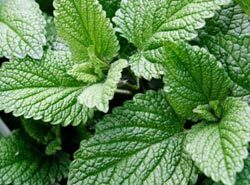 Folk treatment of symptoms of vegetative-vascular dystonia, as a rule, implies the use of medicinal plants( herbal medicine) in various combinations.
Folk treatment of symptoms of vegetative-vascular dystonia, as a rule, implies the use of medicinal plants( herbal medicine) in various combinations.
These fees and tablets are issued by the pharmacological industry. They are effective for regular and long-term admission, although the result of their use can be seen after only 2-3 weeks.
Phytomedication has a complex effect on the body:
- is soothing;
- improves sleep;
- affect the normalization of the bonds of the higher structures of the brain and internal organs.
The most effective are various collections of valerian, peppermint, lily of the valley, lemon balm, chamomile, fennel, motherwort, hops, etc.
Among industrial products with proven clinical efficacy, it is worth recommending Persen.
Its composition:
- is the root of valerian;
- peppermint;
- lemon balm.
As studies show, the use of Persen in 3 weeks gives a marked reduction in anxiety, headaches, pains in the heart and heart attacks are reduced. The drug can be taken continuously.pharmacological dependence and reaction to the withdrawal of the drug is not observed.
Physiotherapy and other variants of preformed therapy
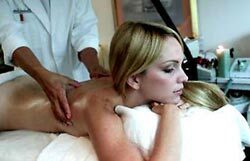 Physiotherapy and preformed therapy help restore the normal activity of the nervous system, which is characterized by unbalance in the IRS.
Physiotherapy and preformed therapy help restore the normal activity of the nervous system, which is characterized by unbalance in the IRS.
The best results are demonstrated by such procedures as:
- electrosleep;
- electrophoresis;
- water treatments - baths, showers and dousings;
- aeroionotherapy;
- massage;
- acupuncture.
Electrosone reduces cardiac manifestations, especially cardiac and pain disruptions. It also has a calming effect. It is recommended to use it in hypotonic form.
Electrophoresis is performed with various drugs depending on the manifestations of NDC:
- with increasing blood pressure, add solutions of magnesium sulfate, sodium or potassium bromide, Euphyllinum, Papaverina, Dibasol, Anaprilin;
- with hypotonic form - Caffeine;
- for asthenia shows a galvanic collar over the Scherbak;
- with cardiac syndrome( pain in the region of the heart) is added a solution of Novocaine, nicotinic acid;
- for arrhythmic form - a solution of Novocain, Panangin or Anaprilin;
- with pronounced hypothalamic dysfunction and vegetative-vascular paroxysms is indispensable intranasal electrophoresis with a solution of Relanium.
The use of medical baths has a positive effect on the course of the IRR.The type of bath directly depends on the form of the disease.
Soothing effect have baths:
- with valerian;
- oxygen;
- are pearly;
- coniferous;
- nitrogen.
In hypertensive, cardiac forms of dystonia a good effect is given by:
- radon;
- iodide-bromine;
- hydrogen sulphide bath.
With hypotensive type:
- carbonate;
- iodide-bromine.
Severe anxiety and agitation decrease after application of radon and nitrogen baths. Distracting procedures for headaches, dizziness will be foot baths, with a water temperature of 40-42 ° C, as well as paraffin applications on the feet.
The use of showers and douches is also quite effective. The water temperature during water procedures in arrhythmias, cardiac syndrome, and also with excitation predominance should be 35-36 ° C, at a low pressure of 32-33 ° C.
Aeroionotherapy is a special kind of physiotherapy. It is based on the fact that after ionization with special devices( Chizhevsky chandelier), air contains a large number of negative ions that enter the bloodstream through the lungs, have an antioxidant and other positive effect on the body.
As a result, in patients with VSD, the pressure decreases, the supply of oxygen to the brain improves, the pulse slows down, sleep becomes better, and headaches decrease.
Massage has a powerful reflex and healing effect in dystonia. Showed as a general massage, and a point, the techniques of which it is easy to teach the patient or his relatives.
The spectrum of influence of acupuncture in the treatment of vegetative-vascular dystonia in women and men is very wide:
- has an analgesic effect;
- improves the functioning of the central and autonomic nervous system;
- increases the adaptive functions of the body;
- reduces head and heart pain;
- eliminates emotional stress;
- has a calming effect.
The effectiveness of this method, used for the treatment of dystonia, is 65-70%.
Adaptogens

Pantocrin
Treatment of vegetative-vascular dystonia in adults implies the reception of adaptogens. They are drugs that:
- help restore strength and tone;
- affects positively the whole organism;
- increases stamina;
- increase resistance to ARI.
With VSD, tinctures of ginseng, eleutherococcus, magnolia vine, aralia are successfully used. From ready-made preparations it is possible to recommend Pantokrin and Cigapan.
However, sometimes they can lead to the development of side effects - to promote increased excitation or blood pressure.
In this case, a dose adjustment or complete drug cancellation is performed. The course of treatment is 3-4 weeks, you can spend 4-5 courses per year.
Treatment of meteorological dependence
It is not a secret for patients that the symptoms and treatment of VSD are related to meteorological dependence. So, in case of weather change, their condition may worsen.
To avoid this, it is advisable to take adaptogens in advance and continue this directly and on days of unfavorable weather. Supplement the treatment can be vitamin E.
In order to prevent meteosensitivity, it is necessary to carry out hardening procedures throughout the year.
More: VSD - what is it in simple words

